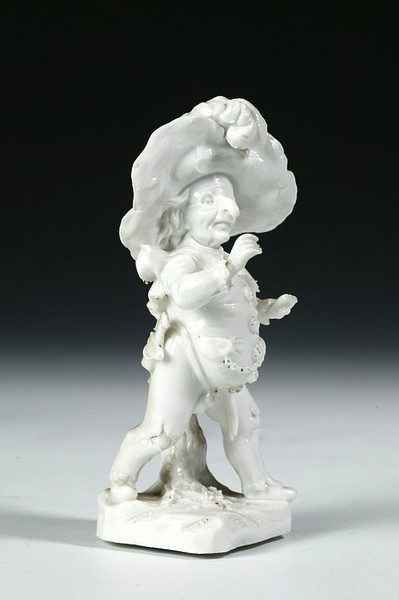 |
| Porcelain Figurine French, 19th C. The Victoria & Albert Museum |
The work of an unknown modeler at an unknown factory, this figurine is one of a series which was produced in Nineteenth-Century France , modeled after engravings by the artist Jacques Callot (1592-1635). The engravings were printed in 1622 and depicted a troupe of grotesque dwarf entertainers who were known as “Les Gobbi.”
“Les Gobbi” famously performed in Italy for the Medici Court during the period in which Callot was working as a court artist for the powerful family. His task was, essentially, recording court entertainment. Such novelty acts were quite popular throughout Europe at the time and few were as sought-after as “Les Gobbi.” French-born Callot studied art and printmaking in Florence, Italy where he was discovered by the Medicis who instantly recognized his talent and offered their patronage. During his stay with the Medicis, Callot developed a reputation as a master of capturing expressions and for his distinct ability to create scenes of both great joy and grotesquerie. Upon the death of Cosimo Medici, Callot returned to his native France where he embarked on an ambitious series of engravings depicting the tradition of the Commedia dell’Arte.
In the Nineteenth Century, Callot’s work was rediscovered and became the inspiration for many figurines ranging from his representations of Commedia dell’Arte figures to these comic dwarves. This white porcelain figure shows the Italian influence on the costumes of "Les Gobbi" who modeled their masks and garments after the Commedia characters. This particular, little fellow has a distinct resemblance to Pulcinella.

No comments:
Post a Comment